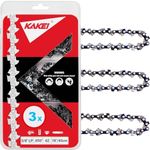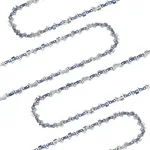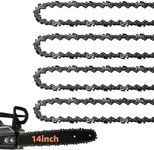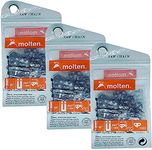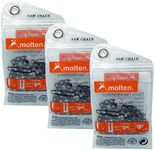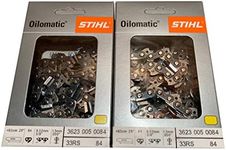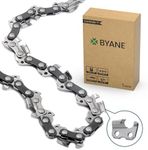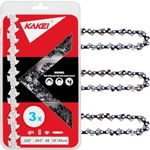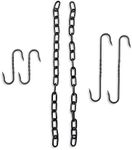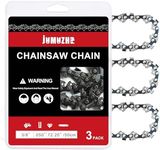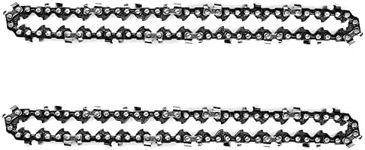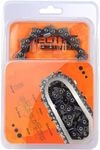Buying Guide for the Best Chainsaw Chains
Choosing the right chainsaw chain is crucial for the performance and safety of your chainsaw. The right chain can make your cutting tasks easier, faster, and safer. When selecting a chainsaw chain, you need to consider several key specifications to ensure it fits your chainsaw and meets your cutting needs. Understanding these specifications will help you make an informed decision and get the best performance out of your chainsaw.Chain PitchThe chain pitch is the distance between any three consecutive rivets divided by two. It is important because it must match the pitch of the chainsaw's drive sprocket and guide bar. Chain pitch is typically measured in inches and common sizes include 1/4 inch, .325 inch, 3/8 inch, and .404 inch. Smaller pitches like 1/4 inch and .325 inch are suitable for light-duty tasks and smaller chainsaws, while larger pitches like 3/8 inch and .404 inch are better for heavy-duty cutting and professional use. To pick the right one, check your chainsaw's manual for the recommended pitch.
GaugeThe gauge of a chainsaw chain refers to the thickness of the drive links, which fit into the guide bar. It is crucial because the gauge must match the guide bar's groove width to ensure a proper fit and smooth operation. Common gauge sizes include .043 inch, .050 inch, .058 inch, and .063 inch. Thinner gauges like .043 inch and .050 inch are typically used for lighter tasks and smaller chainsaws, while thicker gauges like .058 inch and .063 inch are used for more demanding cutting jobs. To choose the right gauge, refer to your chainsaw's guide bar specifications.
Number of Drive LinksThe number of drive links is the count of the links that fit into the guide bar. This specification is important because it determines the length of the chain and must match the guide bar length. Chainsaw chains come in various lengths, and the number of drive links can vary even for chains with the same pitch and gauge. To find the correct number of drive links, check your chainsaw's guide bar or the owner's manual. Choosing the right number ensures the chain fits properly and operates efficiently.
Cutter TypeThe cutter type refers to the shape and design of the cutting teeth on the chain. Different cutter types are designed for specific cutting tasks and wood types. Common cutter types include full chisel, semi-chisel, and low-profile cutters. Full chisel cutters have square-cornered teeth and are ideal for fast, aggressive cutting in clean wood but can dull quickly in dirty or frozen wood. Semi-chisel cutters have rounded corners and are more durable, making them suitable for cutting dirty or frozen wood. Low-profile cutters are designed for safety and are often used by homeowners for general cutting tasks. Choose the cutter type based on the type of wood you'll be cutting and the conditions you'll be working in.
Chain LengthThe chain length is determined by the number of drive links and the pitch. It is important because it must match the length of the guide bar on your chainsaw. Chainsaw chains come in various lengths to fit different guide bar sizes, typically ranging from 10 inches to 36 inches. To choose the right chain length, measure your guide bar from the tip to where it meets the chainsaw body or refer to the chainsaw's manual. Ensuring the correct chain length is essential for safe and efficient operation.
